“FINBAR Cafferkey didn’t lead a usual life – it was quite an unusual life,” explains journalist Kevin Magee of the late Achill Island-born man he has just made a documentary about.
Finbar (45) died during a mortar attack in Bakhmut last April, having travelled to eastern Ukraine to fight as a military volunteer. He was killed alongside two other volunteers, Russian-born Dmitry ‘Leshiy’ Petrov and American ex-Marine, Cooper ‘Harris’ Andrews, while attempting to keep a vital supply line to the city in the Donbas region from being overrun by Russian forces.
By the time of his death, the Co Mayo man was already a combat veteran, having fought with the Kurdish YPG militia in Syria against Islamic State.
Prior to this, in 2015, Finbar had travelled to Greece as part of an aid effort to help Syrian refugees fleeing to the Greek island of Kos.
Closer to home, he was an active participant in the Shell to Sea protests against the Corrib Gas project in the mid 2000s.
Read more:
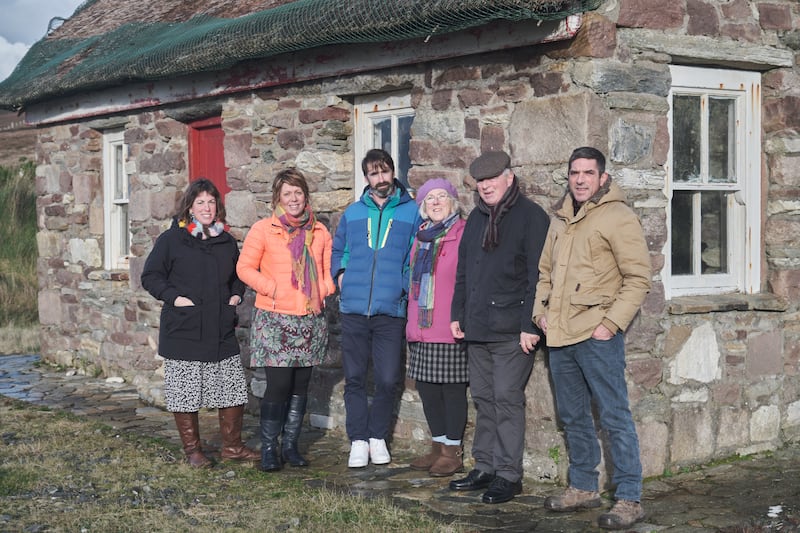
Although Finbar’s body has not yet been recovered from Bakhmut, his family held a memorial service for him on Achill last May. A large group of Ukrainians living in nearby Westport attended, laying a wreath bearing the message: “To our hero, Finbar Cafferkey. From all Ukrainians.”
“It’s an extraordinary story that a man from Achill ends up dead in Ukraine, fighting for Ukraine – but the journey that Finbar took to get there I thought was also really interesting and worthy of a good exploration,” explains Magee of why he chose the Achill Islander as a subject for the opening episode of the latest series of Iniúchadh TG4, the channel’s Irish language documentary strand.
“Initially, I thought that Finbar had sort of drifted into the Ukrainian war, that he had become a soldier because he was kind of dragged into it to an extent, after having gone there initially to help deliver aid.
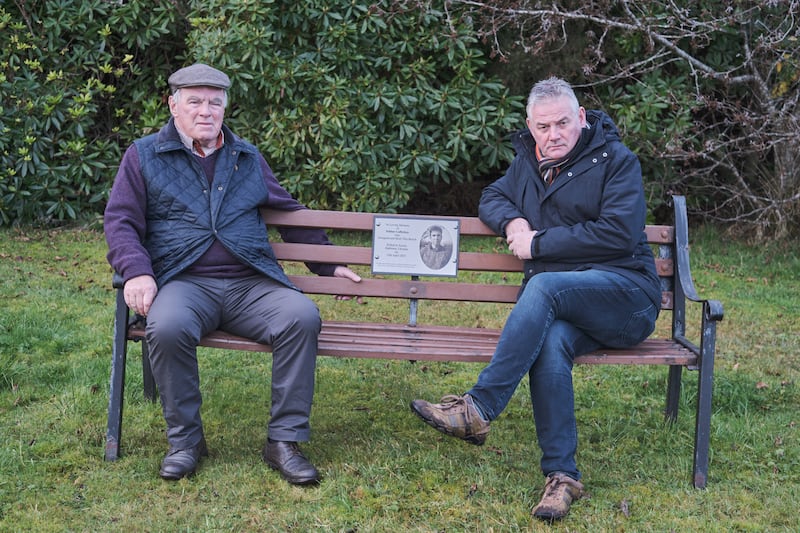
“In actual fact, I discovered that he had already tried to join the fighting on a previous occasion, but was rejected for some reason.”
Indeed, the film highlights the existence of an international subculture of men and women who readily, often repeatedly, travel to the most dangerous countries and conflicts in the world, volunteering to put their lives on the line by taking up arms for causes they identify with.
“When I started the research and found out he’d also been in Syria with the YPG. That really interested me,” explains Magee.
“And then it transpired that one of the men he died with, Dmitry, who was a Russian anarchist, was also in the YPG.
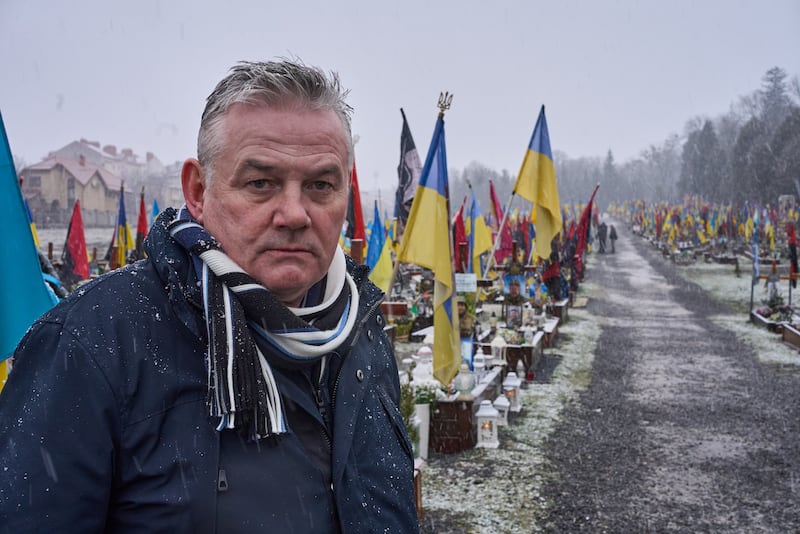
“I interviewed a guy at Malmo University, Joshua Farrell-Molloy, who is studying this,” says the TG4 film-maker of one expert he spoke to for the new documentary.
“He is actually doing a PhD on the reappearance of fighters in different conflicts.
“I was very interested in the idea that there are people who go from conflict to conflict and are ideologically driven.
“Clearly, Finbar had decided from the very beginning when Putin invaded the country that this passed his ‘ideology test’. He probably decided then and there that he was going to go and join the fight.”
The former BBC investigative journalist travelled to Ukraine himself for the new film, which airs tomorrow evening and features interviews with the Cafferkey family on Achill, along with Finbar’s former comrades in arms and Gerasko Larysa, the Ukrainian ambassador to Ireland.
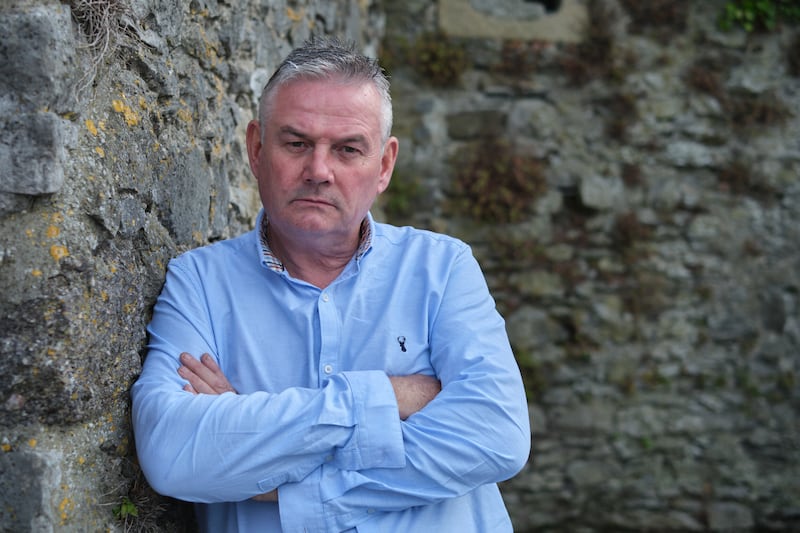
The documentary paints a picture of a somewhat solitary humanitarian and anti-imperialist, with no ties other than to his family back in Ireland. It seems Finbar Cafferkey thrived on being able to ‘make a difference’ when presented with the opportunity to back up his beliefs with direct action.
“When he was growing up, Finbar was always interested in what was going on around him,” Magee tells me of what he learned about his subject during the course of the documentary.
“He was an avid reader who had four or five different books going at one time, one in each room of the house.
“He was quite a quiet guy, but a very deep thinker. When he went to university, he was more interested in the world around him, in politics and equality, than what he was studying.
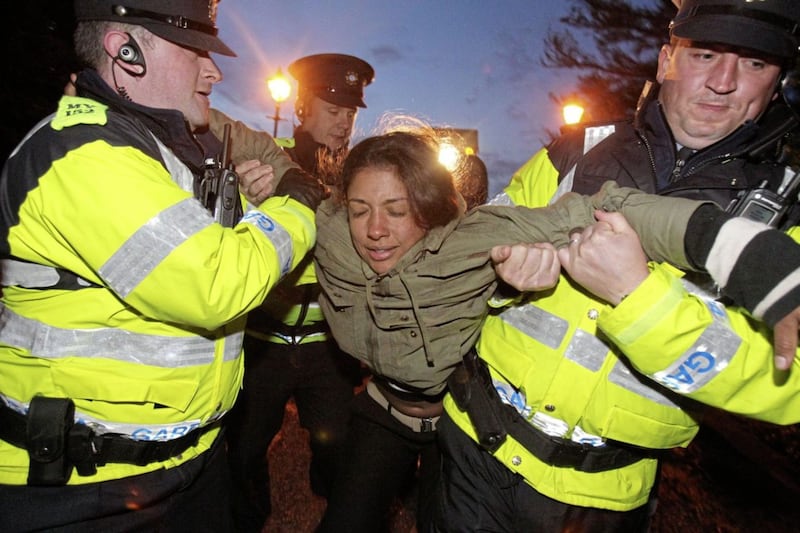
“The whole Shell to Sea thing I think radicalised him, to an extent – he said that afterwards himself. It was a kind of an education for him in terms of his own politics.”
Magee adds: “There’s a big difference between supporting a cause and actually getting up off the sofa to go and be a participant in a war. This programme tries to excavate the reasons why someone would do that.”
While Finbar’s family might have grown used to him getting involved with worthy causes like Shell to Sea and the Syrian refugee crisis, as well as not hearing from him for extended periods, nothing prepared them for the moment they found out that he was actually actively fighting Isis on the Syrian frontlines as a YPG volunteer.
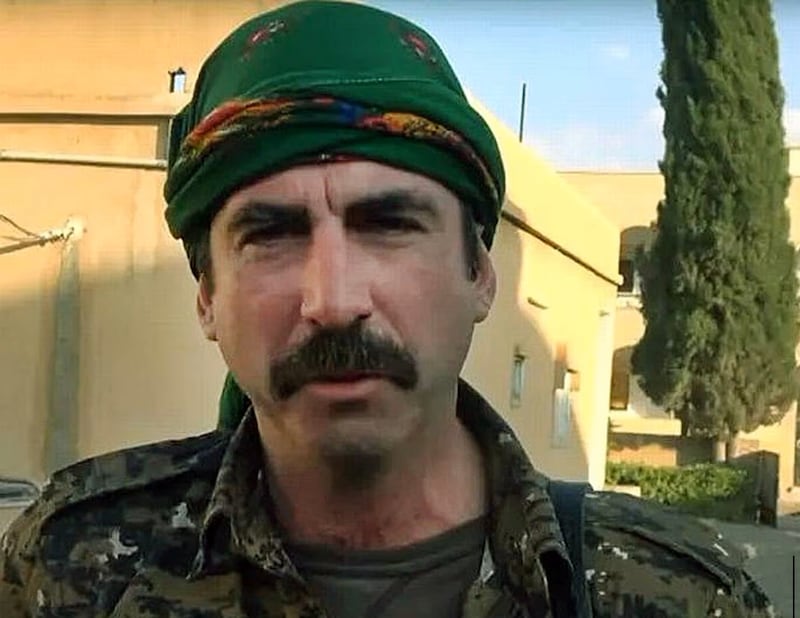
“His family were absolutely gobsmacked,” explains the Downpatrick-based film-maker.
“The first they heard about any sort of military involvement was whenever he appeared in a video that the YPG posted online.
“Imagine the shock: you click on a video and there’s your brother, in a military uniform, in the middle of Kurdistan, with an AK-47. They just couldn’t believe it, you know?
“Then, later on, he only confided in his brother, Colm, that he’d joined the Ukrainian army – he didn’t tell the rest of the family.”
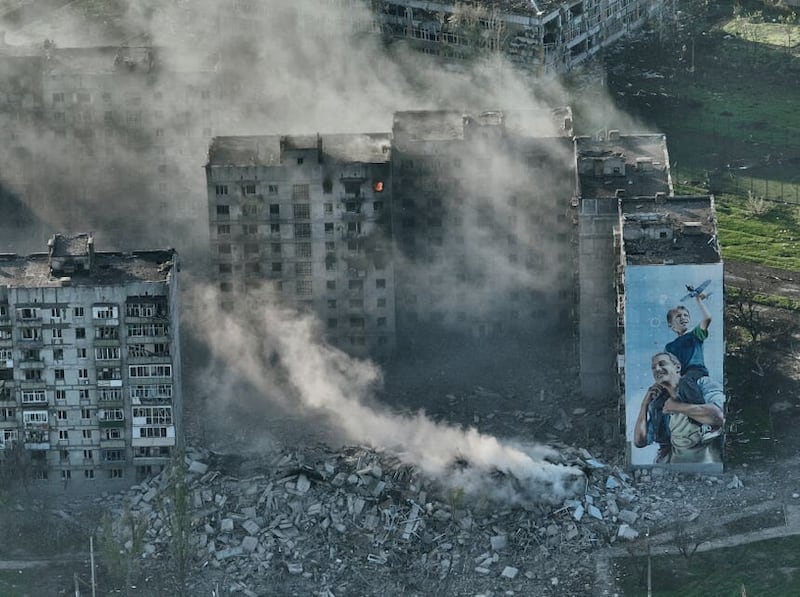
With Bakhmut still an active war zone today, the Cafferkeys have now all but given up hope of ever repatriating Finbar’s body.
In one sobering scene, Magee visits a massive military cemetery in Lviv: it is jam-packed with graves, most adorned with colourful tributes to the recent war-dead who now lie there.
“That cemetery wasn’t actually there two years ago,” he tells me.
“If you want to see the impact of war in Ukraine, you only need to visit somewhere like that – and it’s only one of many similar cemeteries throughout the country that are now absolutely overflowing.”







